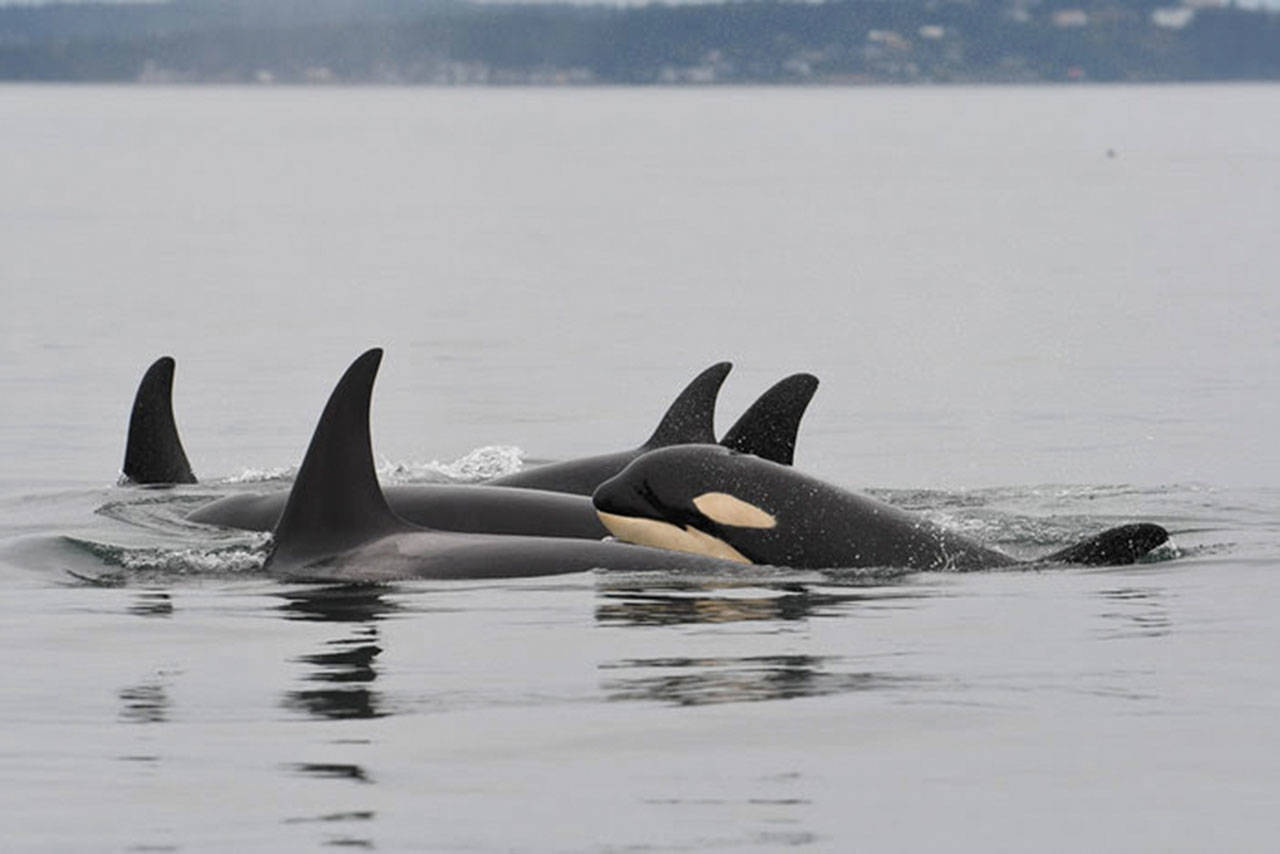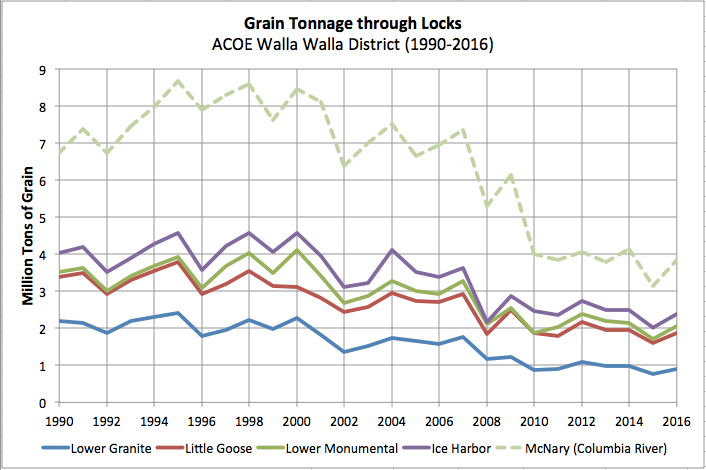forum
library
tutorial
contact

What Look at Snake Dams
Can Mean for Orcas, Us
by Editorial Board
Everett Herald, March 17, 2019
|
the film forum library tutorial contact |

|
What Look at Snake Dams
by Editorial Board
|
The state shouldn't shy away from a discussion of the costs and benefits of breaching four dams
 Nobody said it was going to be cheap. Or easy.
Nobody said it was going to be cheap. Or easy.
But if two of Washington state's signature species -- orca whales and the salmon on which they depend -- are to survive it will take a range of actions, significant funding, some sacrifices and a willingness to adapt.
At last count, 74 Southern Resident killer whales remain in the three family pods that spend part of their year around the San Juan Islands, Puget Sound and the larger Salish Sea, down from a peak of nearly 100 about 20 years ago. While orcas face myriad threats to their health, the most significant remains the decrease in abundance and size of salmon, specifically chinook, on which they predominately feed.
State, federal and Canadian fisheries experts are predicting returns of spring chinook to the Columbia River to drop about 14 percent lower than last year's returns and amount to about half of the 10-year average. For Puget Sound rivers, less than 30,000 wild chinook are predicted to return. Only coho salmon returns are expected to be about 15 percent above their 10-year average.
Fortunately, there are a range of actions already outlined last year -- 36 in all -- by the state's Southern Resident Orca Task Force that seeks to address the array of challenges that salmon and orca are facing, including impacts from marine vessel noise and activity that hamper the orcas' hunt for salmon and the presence of toxic chemicals that affect their health. At the end of the year, Gov. Jay Inslee, used many of those recommendations to propose $1.1 billion in spending along with other policies that now are under consideration in the Legislature.
That array of solutions deserves lawmakers' full consideration; one, in particular, because it already faces significant opposition but presents significant promise in restoring salmon spawning habitat that could help restore healthy runs of chinook and other salmon.
Among the spending sought by Inslee is $750,000 that would support the work of further study and discussion on the impacts and opportunities of removing the four "run of the river" hydro-electric dams on the lower Snake River in Eastern Washington, the Columbia River's largest tributary.
The removal of some of the state's smaller dams are also among the recommendations, including one on the Pilchuck River. The recent removal of the Elwha Dam on the Olympic Peninsula shows some of the promise in restoring salmon habitat. Five years after its removal, the forecast for the Elwha River shows better returns for wild chinook.
Opponents of removal of the four Snake River dams, notably U.S. Reps. Cathy McMorris Rodgers, R-Spokane; and Dan Newhouse, R-Sunnyside, have criticized the proposed study as wasteful because, "breaching them is out of the question." Backers of the dams have pointed to the dams' roles in providing irrigation, barge transportation for wheat and other agricultural products and electricity.
A closer look at what the dams provide, however, questions the dams' actual utility and speaks to the potential benefits for salmon, orca and even the economic health of Eastern Washington if the dams were removed.
We've discussed earlier that the electricity produced by the four dams can -- and in coming years will -- be replaced as new wind turbines and solar facilities are built. A study commissioned by the Northwest Energy Coalition found that the four dams produce about 4 percent of the region's electricity but could be replaced with a mix of wind, solar and energy efficiency programs that would add about $1 a month to the electrical power bills of most consumers.
Continuing the supply of water for irrigation would require little more than moving the pumping equipment.
 And replacing the barge transportation, for which the U.S. Army Corps of Engineers built the dams and their locks in the 1960s and 1970s, is already happening, as shippers have increased their use of rail to transport grain and other crops.
And replacing the barge transportation, for which the U.S. Army Corps of Engineers built the dams and their locks in the 1960s and 1970s, is already happening, as shippers have increased their use of rail to transport grain and other crops.
The shift from barge to rail has not gone unnoticed by Eastern Washington farmers, including Bryan Jones, a Colfax wheat farmer who spoke to the editorial board last week.
Jones doesn't make the choice on how his wheat is shipped; he just pays the 47 cents for a 60-pound bushel to do it. That decision is made by the shipping company he uses, but increasingly his wheat makes its trip by railcar and not barge.
Shipping by barge is not without its costs, particularly to taxpayers who subsidize the dredging and other maintenance performed by the Corps to keep the locks in operation.
Jones is an admitted minority among his fellow farmers in supporting an examination of removing the four Snake River dams, but it's one-on-one conversations that he has had with farmers and others in Eastern Washington -- a few like himself who can recall what the Snake was like before the dams were built -- that show the issue isn't "out of the question."
"When you talk quietly with them, they begin to see the possibilities," Jones said.
Along with a deeper investigation of the costs, benefits and changes that removal of the dams would bring, those conversations need to occur among all whose lives are tied to the Columbia and Snake rivers in Washington, Oregon and Idaho: farmers, community members, commercial and sports fishers, tribes, environmental groups, utilities, electricity consumers and many others.
The possibilities Jones sees are for continued viability of Eastern Washington agriculture but also an economy strengthened by investment in a broader renewable energy sector that is already in increasing demand, as well as for the region's recreational economy that would be buoyed by healthy returns of salmon to the Snake and its tributaries.
Not too surprisingly, what's good for salmon and orca could be good for us all.
learn more on topics covered in the film
see the video
read the script
learn the songs
discussion forum
